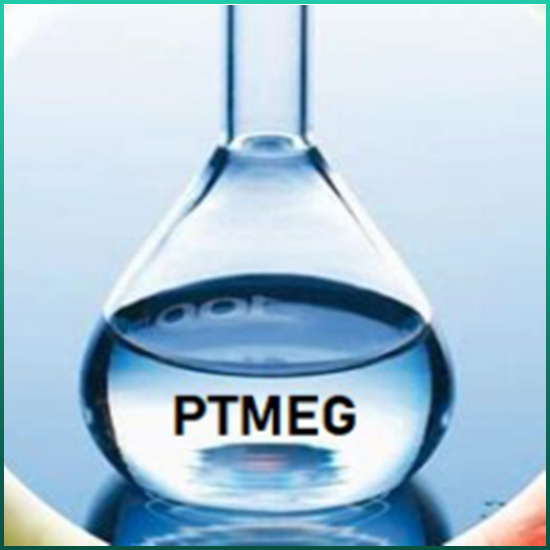Why Is Polytetrahydrofuran (PTMEG) CAS:25190-06-1 the Key Material for High-Performance Elastomers and Fibers?
2025-10-20
Polytetrahydrofuran (PTMEG) CAS:25190-06-1, also known as poly(tetramethylene ether) glycol, is one of the most versatile and valuable polymer intermediates in modern materials science. As a high-quality polyether diol, it serves as a crucial raw material in producing spandex, thermoplastic polyurethane (TPU), polyurethane elastomers, and various coating resins. I have worked with PTMEG for several years in industrial projects and have witnessed its remarkable impact on product performance, flexibility, and durability. H&Z INDUSTRY CO., LTD supplies Polytetrahydrofuran (PTMEG) CAS:25190-06-1 with high purity and consistent quality, tailored to meet different industrial applications.
What Is Polytetrahydrofuran (PTMEG) CAS:25190-06-1?
Polytetrahydrofuran (PTMEG) CAS:25190-06-1 is a linear polymer with repeating tetrahydrofuran units, terminated by hydroxyl groups. It is a white, waxy solid at room temperature, soluble in common organic solvents, and exhibits excellent elasticity and chemical resistance.
Key Physical and Chemical Properties:
| Parameter | Specification |
|---|---|
| Chemical Formula | HO–(CH₂CH₂CH₂CH₂O)n–H |
| Appearance | White solid or colorless viscous liquid |
| Molecular Weight | 250–4000 (typical grades) |
| CAS Number | 25190-06-1 |
| Purity | ≥ 99% |
| Hydroxyl Value | 112–45 mg KOH/g (depending on grade) |
How Does PTMEG Work in Industrial Applications?
Polytetrahydrofuran (PTMEG) CAS:25190-06-1 functions primarily as a soft segment in polyurethane formulations, providing flexibility and low-temperature performance. It reacts with diisocyanates to produce elastomers with outstanding resilience, abrasion resistance, and hydrolytic stability.
Common Applications:
-
Spandex fibers: Enhances elasticity, strength, and smoothness.
-
TPU (Thermoplastic Polyurethane): Improves wear resistance and mechanical strength.
-
Adhesives and coatings: Provides excellent flexibility and gloss.
-
Sealants and rubber components: Ensures durability and resistance to deformation.
When I first tested PTMEG in polyurethane coatings, I was surprised by its smooth film formation and superior flexibility compared to polyester-based systems. The difference was clear: PTMEG-based materials retained elasticity and color even after long-term exposure to harsh environments.
Why Is PTMEG So Important in Polymer Manufacturing?
Polytetrahydrofuran (PTMEG) CAS:25190-06-1 plays a crucial role in ensuring the performance of polymer materials. Its molecular structure offers unique advantages:
-
High flexibility: Ensures excellent elasticity even under cold temperatures.
-
Hydrolysis resistance: Provides better water and chemical resistance than polyester polyols.
-
Low glass transition temperature: Maintains flexibility over a wide temperature range.
-
Compatibility: Works well with a variety of diisocyanates and chain extenders.
Advantages Overview
| Advantage | Description |
|---|---|
| Elasticity | Delivers long-lasting flexibility and resilience |
| Durability | Enhances mechanical strength and wear resistance |
| Stability | Maintains performance in heat, water, and chemicals |
| Versatility | Suitable for spandex, TPU, coatings, and adhesives |
Q&A: Deep Dive into PTMEG
Q1: What makes Polytetrahydrofuran (PTMEG) CAS:25190-06-1 superior to other polyols?
A1: Its ether backbone offers greater elasticity, chemical resistance, and hydrolysis stability than polyester polyols, making it ideal for spandex and TPU production.
Q2: Can PTMEG improve the performance of polyurethane products?
A2: Absolutely. When I used PTMEG in high-performance elastomers, the products showed better flexibility, lower compression set, and enhanced resistance to fatigue and oil.
Q3: How does H&Z INDUSTRY CO., LTD ensure the quality of PTMEG?
A3: H&Z INDUSTRY CO., LTD follows strict quality control standards, ensuring that every batch of Polytetrahydrofuran (PTMEG) CAS:25190-06-1 meets international specifications. Advanced purification and molecular weight control technologies guarantee product consistency and reliability across applications.
The Industrial Impact and Market Significance
In industries such as textiles, footwear, automotive, and coatings, PTMEG is a foundational ingredient. Its importance goes beyond chemistry—it's about enabling innovation. The flexibility of spandex fibers, the durability of polyurethane soles, and the toughness of TPU films all depend on PTMEG's molecular structure.
As a chemical professional, I believe that Polytetrahydrofuran (PTMEG) CAS:25190-06-1 will continue to be a cornerstone in developing next-generation materials that combine softness with strength. H&Z INDUSTRY CO., LTD remains committed to providing high-quality PTMEG and technical support for global partners.
Conclusion
Polytetrahydrofuran (PTMEG) CAS:25190-06-1 is more than just a raw material—it's a performance enhancer that shapes the future of elastomers and fibers. With its exceptional flexibility, resistance, and stability, PTMEG continues to be indispensable in industries that demand high performance and reliability.
If you're looking for a trusted supplier offering premium-grade PTMEG with professional technical support, contact us at H&Z INDUSTRY CO., LTD. Our team is ready to help you find the perfect solution for your production needs.
